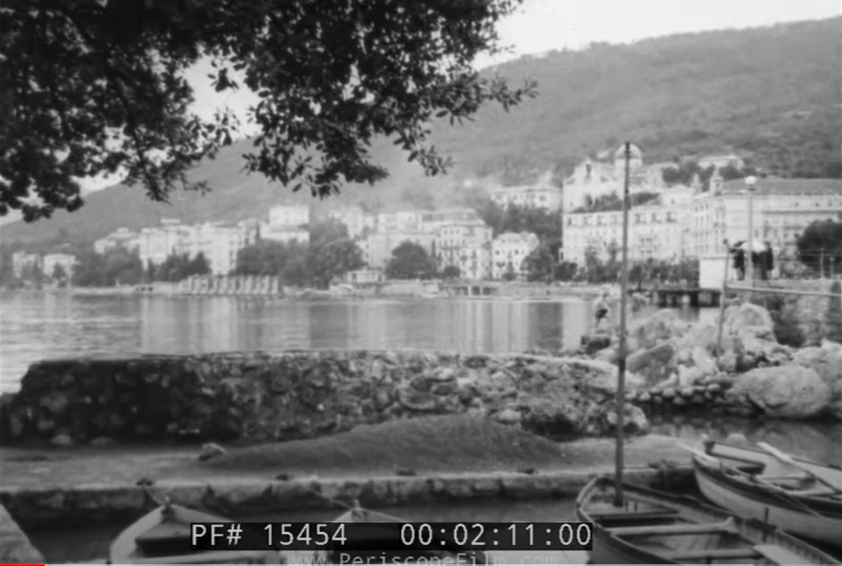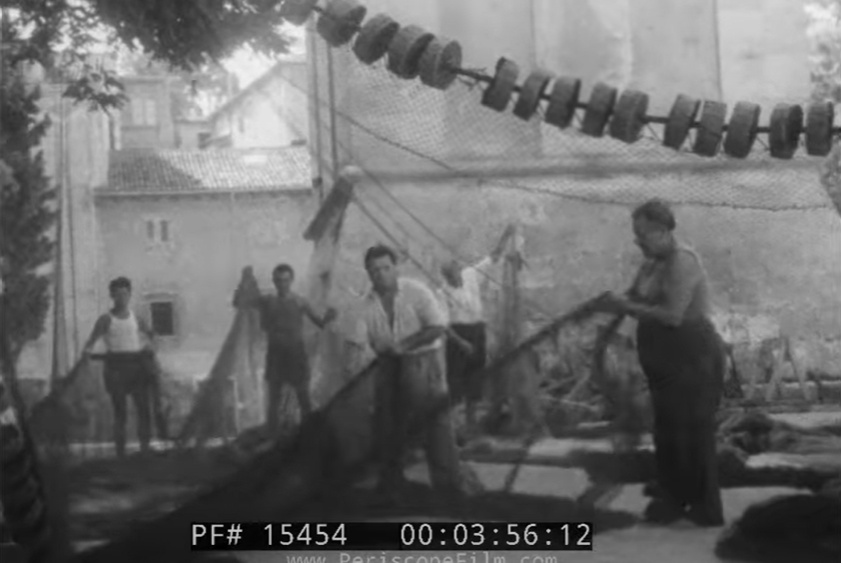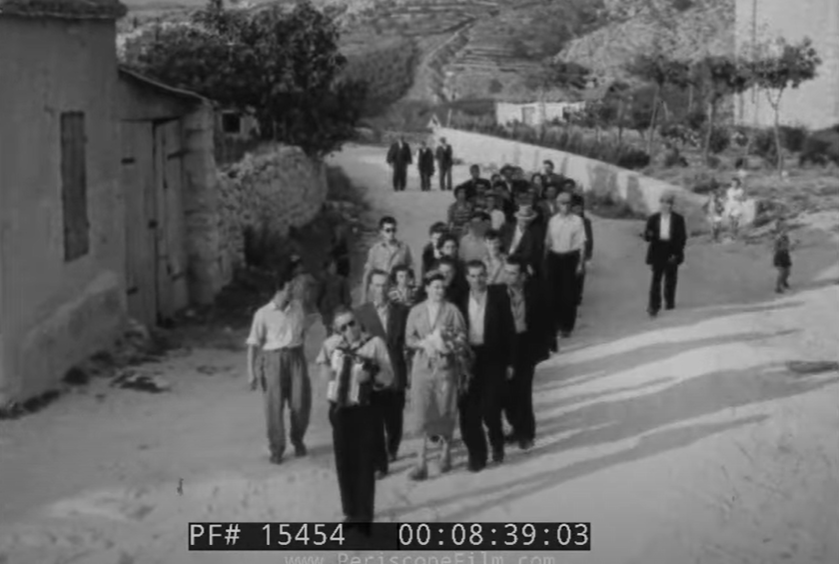Ever Heard of the Bronze Age Diet? Vučedol Archeological Remains Revisited
January 29, 2022 - The Paleo or Stone Age diet is amongst the most popular lifestyle trends in the 21st century, claiming a variety of health benefits including weight loss and improved mental health.
But what about our ancestors after the stone age? What were their lifestyles like over the next 3,000 years?
A Croatian ancestral burial site may hold some answers.
A recent study on remains excavated from the Vučedol archeological site located in eastern Croatia was able to determine the long-term dietary choices, and the type of food that inhabitants consumed during the Bronze Ages.
Results point to the possibility that they consumed more animal proteins and fewer greens than our Paleolithic ancestors.
Where is Vučedol and what is the significance of this site?
Vučedol is an important archeological site located in the southwestern Carpathian Basin.
In terms of modern boundaries, the vast Basin spans across the territories of Hungary, Slovakia, Poland, Ukraine, Serbia, Croatia, Slovenia, and Austria.
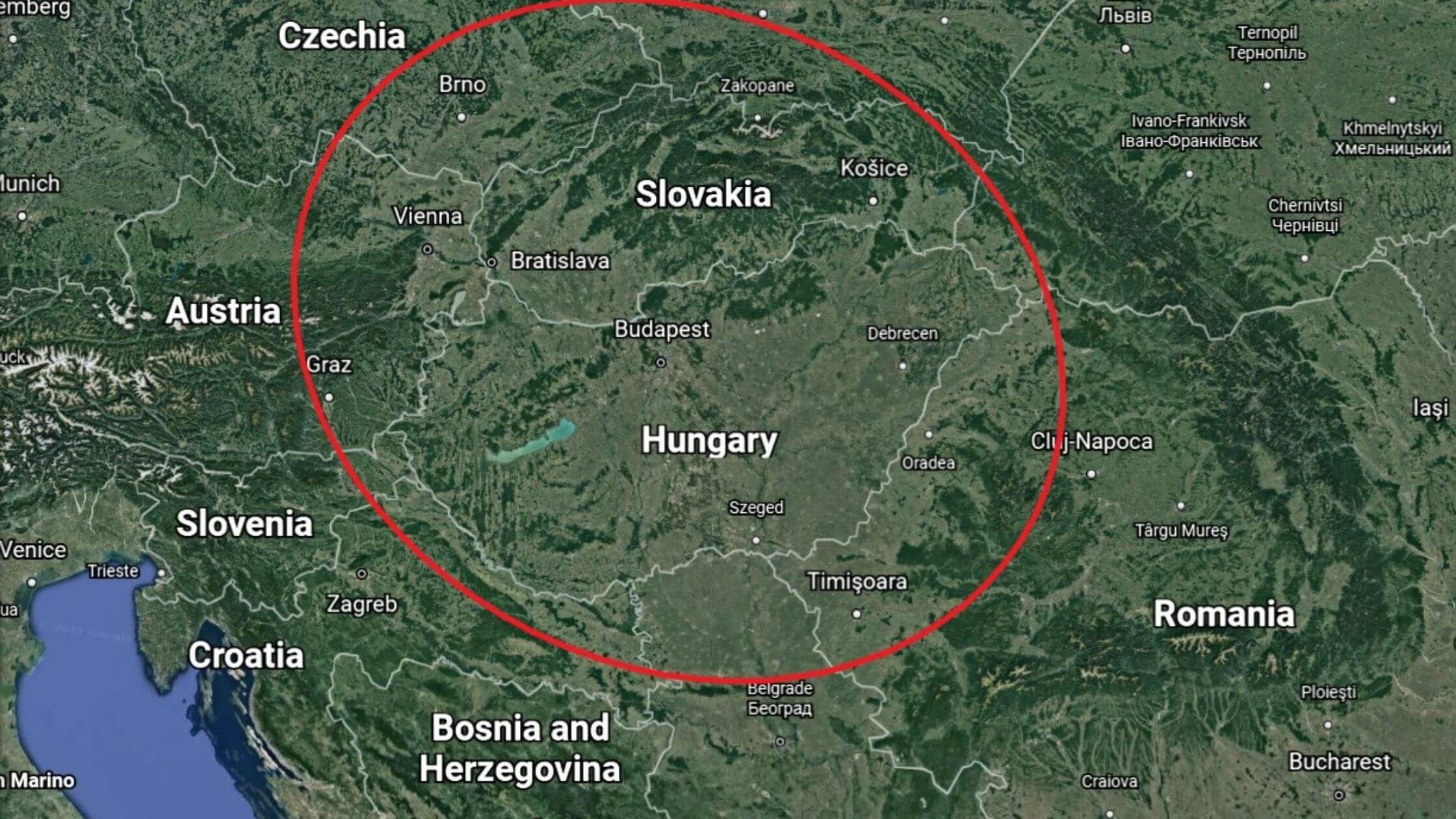
Outline of the Carpathian Basin with Modern Boundaries. Image: Google Earth
The Vučedol archeological site is located in the eastern region of Slavonia, along the Danube River, and is approximately 5 kilometers downstream from Vukovar.
While only 10% of the Vučedol site has been excavated today, rich findings from the area have improved our understanding of the late Stone, Copper, and Bronze Ages within the Carpathian Basin.
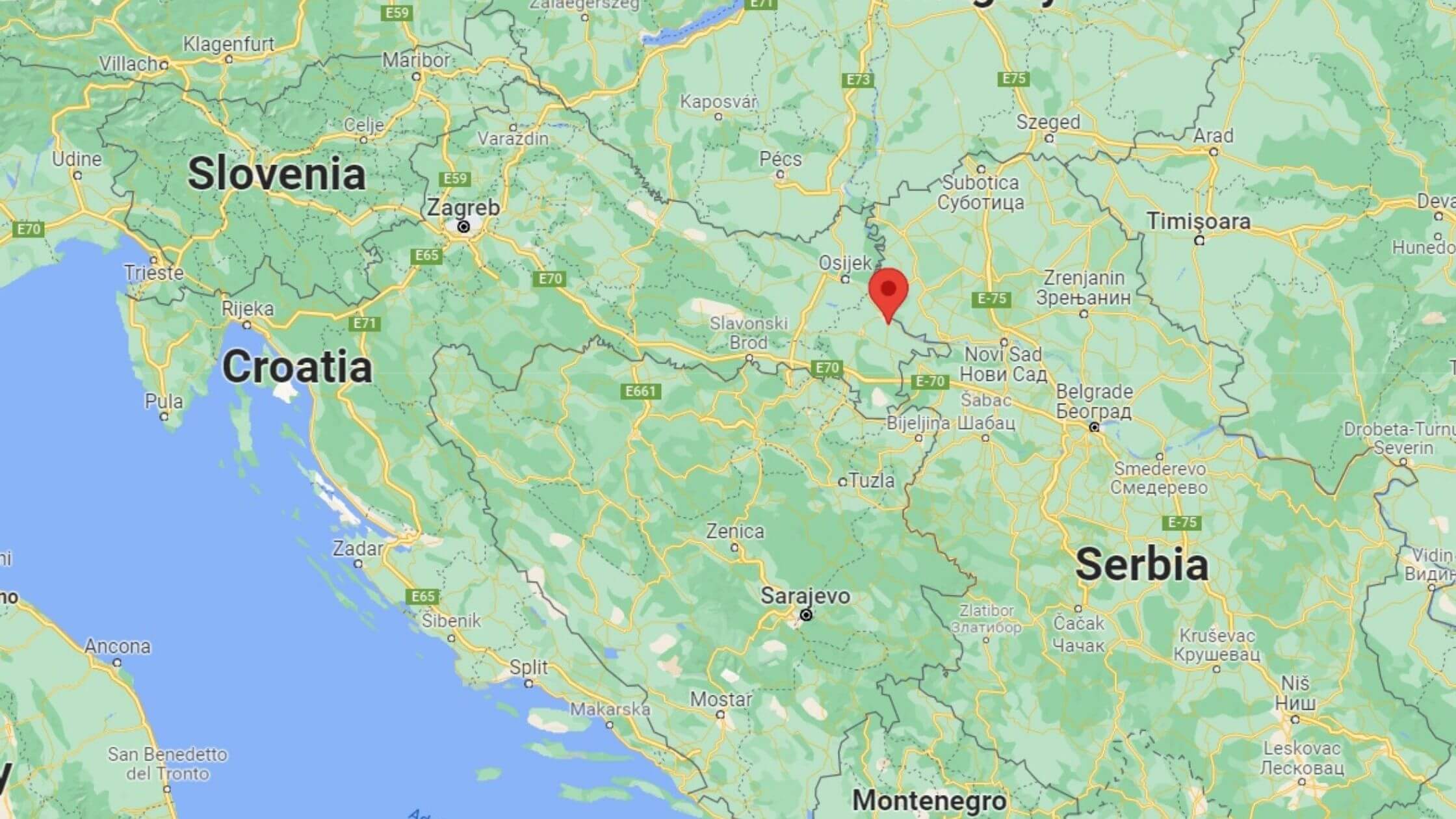
Location of Vukovar, Croatia. Image: Google Maps
For more in-depth reports of Vučedol heritage and archeological findings, take a look at TCN’s coverage here and here.
New insights
The remains at Vučedol were originally unearthed in 1897, where a total of 15 skeletons were found. However, due to technological and financial constraints, bioarchaeological data on these remains have been relatively scarce.
Fortunately, with access to modern scientific methods (i.e. stable isotope analysis) researchers have been able to revisit and conduct a series of tests on human remains excavated at Vučedol in the late 19th century.
Researchers suggest the graves dated back to the Early Bronze Age (3300-1200 BCE), but individuals were buried over a time period spanning several decades.
By examining the dental and skulls of the remains, the sex and age distributions of these remains stood out. The group was evenly represented by four male and four female skeletons. All individuals were able to reach adulthood.
Of these, 6 were considered ‘middle/older’ aged 35 years and older, while the other two were categorized as ‘young/sub adults’ (18-35 years).
Other archeological digs have unearthed remains from the same time period, but usually consisted of children or young/sub-adults. Although 5 of these individuals suffered from poor health during childhood, they were well enough to reach adulthood.
Some of the ailments they suffered were attributed to the lack of vitamins B12, and anemia brought on by iron deficiency and harsh living conditions.
During the Early Bronze Age, inhabitants experienced extensive socio-economic change. They lived through a period of great prosperity around 2500 BCE, lasting almost 150 years. Unfortunately, their fortunes reversed quite rapidly with a decline that lasted another 100 years.
Stone age vs. Bronze age diets
Researchers were also able to outline clear differences in diets between the Late Stone Age and the Early Bronze Age based on comparisons of stable isotope values from the remains.
It showed the reliance of inhabitants on different ratios of crops and animal proteins which evolved depending on the climate and social-economic conditions.
Generally, inhabitants of the Late Stone Age adopted similar agricultural practices. In line with the growing conditions of the area at the time, their diets were mostly made up of fibrous crops such as rice, wheat, barley, oats, beets, and potatoes as opposed to corn, sugarcane, or millet.
At the turn of the Early Bronze Age, it appears the region’s inhabitants began to incorporate more meat in their diet with a decrease in plant carbons in their remains compared to their Stone Age counterparts.
Researchers theorized inhabitants of the Early Bronze Age were able to regulate the farming of livestock, which provided them with a dependable source of protein.
Alternatively, the increase in protein consumption could also be due to the lack of abundant plant vegetation. Climate conditions during the time were seemingly not as hospitable to agricultural farming as those living during the Stone Age
They also supplemented their diet by hunting wild game such as deer and boar from the nearby forests. Occasionally, they caught fish from the Danube River, albeit to a much lesser extent than the consumption of animal proteins.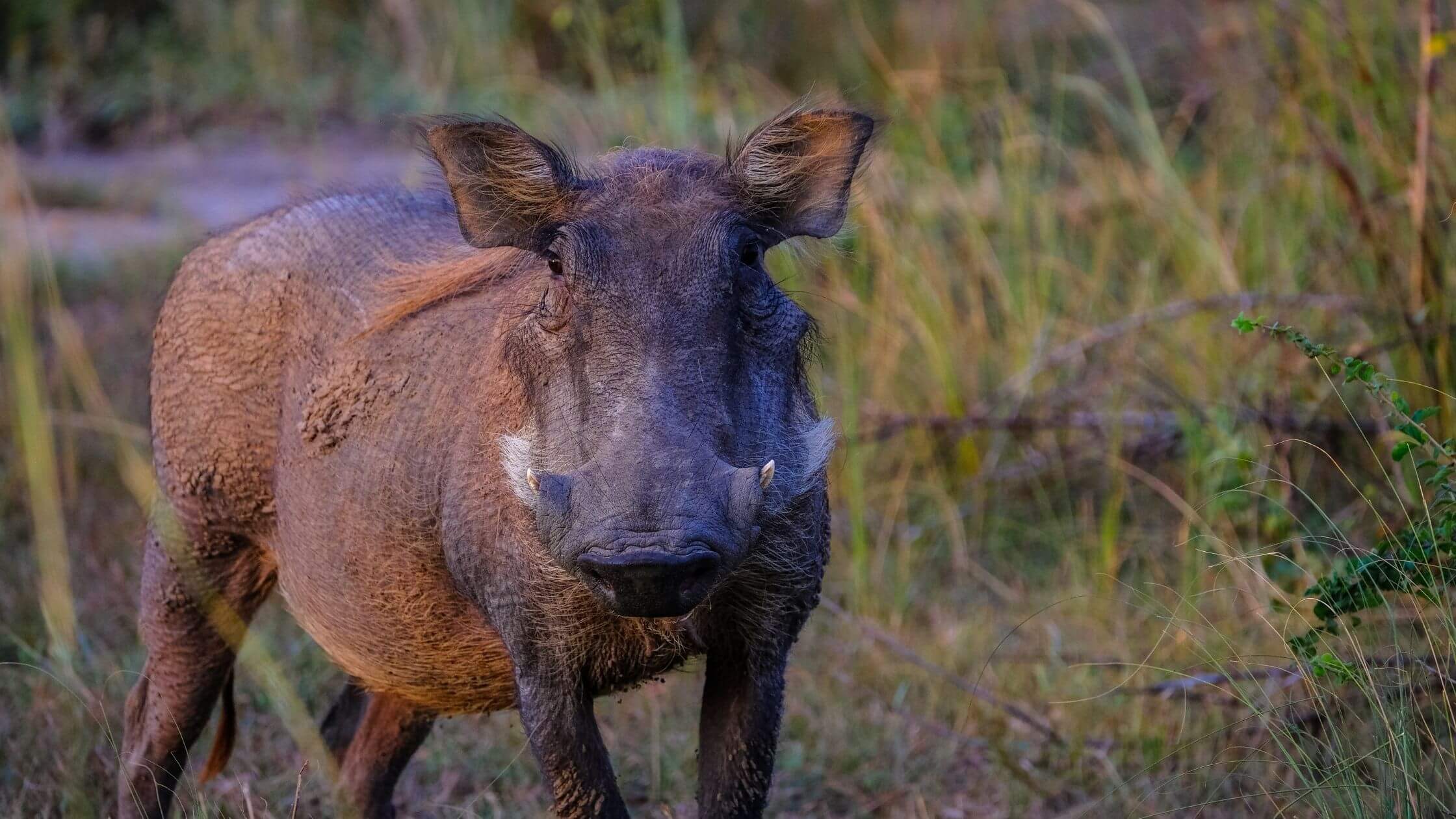
Wild Boar. Image: Francesco Ungaro/Pexels
While stable isotope analysis provides powerful insights into the types of food our ancestors consumed, for example, that they were likely eating more rice and potatoes than corn, it has limited application in identifying exact types of produce as well as serving sizes.
History of the Vučedol site
This site was inhabited for three millennia, from the Neolithic to the Bronze Ages (4000-1500 BCE), providing invaluable insights into the lives of people and the social and economic changes during this period.
Towards the end of the Copper Age, lived the Vučedol culture (3080-2340 BCE). The first recorded finds arrived at the Archeological Museum of Zagreb as early as 1894 through Josip Brunšmid, museum director.
This collection continued to grow due to the support of the Streim family who owned the land.
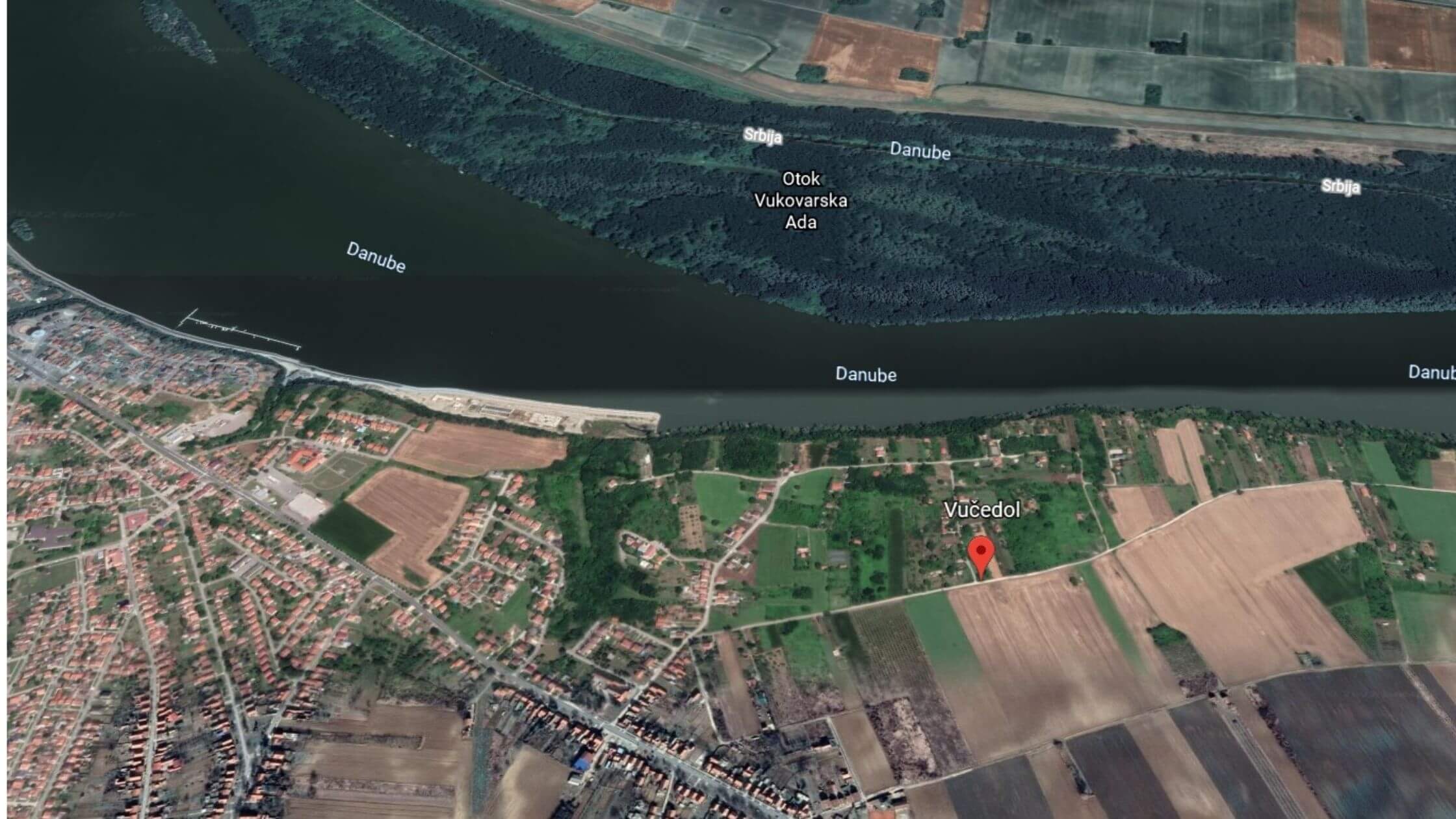
Vučedol, along the Danube River. Image: Google Earth
In one of the most famous finds surrounding the Vučedol site, ceramics were unearthed in 1938 by German archeologist RR Schmidt. The Vučedol culture was well known for the production of ceramics that required highly refined pottery skills.
These vessels are currently on display at the archeological museum in Zagreb.
For more, check out our dedicated lifestyle section.
Meet Vukovar 365, Full of Life: Monika Šrajbek of Vu Life
January 29, 2022 – Meet Monika Šrajbek, the head of tourism at the Vu Life Center, a one-stop shop for medical tourism in Vukovar.
With creativity flowing, amazing products that need to be heard of, and most importantly energy to do something significant for tourism in Vukovar, this small business strives to keep up with the times and always offer something new. Vu Life Center is one of the rare attempts of medical tourism in the city, offering aesthetic procedures using modern technology. What once was a private ob-gyn practice became a practice for aesthetic medicine and eventually grew into an agency in its own right. Today, it encompasses Vu Life Journey as a travel agency, as well as Vu Life Shop where you can buy souvenirs and amazing local products such as honey, lavender, toys, and more. We spoke to their head of tourism, Monika, who is in love with Vukovar and is on a mission to spread positivity and make everyone feel just the same as she does about it.
Tell us about your business, what do you do exactly?
My job is to manage the tourism department of our (still) small business. I take care of our accommodation facilities, which include booking, welcoming, and caring for our guests. I recently became the head of the travel agency which we opened last year. Because I enjoy my job so much, I do many different things, and I don’t call any of it work.
Where did you get the idea and what makes your offer unique?
Our director Mirjana Semenić Rutko started off with a private gynaecological practice. Perfecting her services, she acquired modern technology for medical aesthetics. This way, unique medical treatments for the face and body became possible in Vukovar and Slavonia. If you want to "iron out" some wrinkles or get rid of annoying cellulite, we’re here for you! In 2017, we opened 2 facilities for tourist accommodation. To make things run more smoothly and elevate our services, we opened Vu Life Center in 2018. With the development of the business came the idea that it would be nice to round up all the work that the company is engaged in. We ended up doing that through our travel agency Vu Life Journey. To create an even more special offer, we bought some VR glasses and got software developed to feature the stories of our museums: the City Museum, the Vučedol Culture Museum, the Vukovar Water Tower as well as one presenting a cruise on the Danube. Our VR stories provide a truly extraordinary experience – during your visit you can touch (and even break) dishes and objects that you would not find in a classic tour. Or imagine looking at paintings in the museum while Count Eltz himself plays the piano for his beloved…
And if you happen to visit and forget to buy a souvenir, don’t worry. You can order it in our webshop!
What was it like starting a business in Vukovar? What were the main challenges?
It was not easy (not that it is anywhere in Croatia), and there were some obstacles, especially with paperwork. The main challenges now include creating a quality, interesting offer, networking, connecting, positioning ourselves on the market.
Do you think that the fact that you are in the east of Croatia influenced your success?
Doing business in eastern Croatia is actually a big advantage. We are the only ones in this part of the country with such an offer so our competition is minimal, if at all existent. Vukovar is in an excellent geographical position and is only a few hours away from big cities such as Zagreb, Budapest, Belgrade…
Are you satisfied with how your business is developing? What is your perspective for the future?
We are more than satisfied! To us, it is clear that we are moving in the right direction, and we hope that we will stay on that path.
What opportunities are there in our city and region?
There are many possibilities just waiting to be recognized. Some willpower goes a long way.
What is your view on other small businesses in Vukovar?
We are connected with many small businesses at the core of our existence. Our work is related to both private and public services. In my opinion, the essence of tourism lies in everyone coming together to market their best products – winemakers, food producers, renters, museums.
One of the reasons why we started a webshop is to sell locally produced souvenirs. That part of our story is a bit slower, but we are happy with the progress.
If we were to implement the Vukovar Card, would you support the initiative?
Of course, we would! We support every idea that brings positivity to all.
Finally, tell us something about life in Vukovar. What do you like most, what would you say to all potential visitors?
From the moment I moved to Vukovar, I fell in love with it. It’s a beautiful city with a long and rich history. Almost every street has its own story. The people I met here have enriched my life (probably because positivity always attracts positivity). I would say to all visitors to come with an open heart and really get to know this special city and its surroundings!
Where can we find you?
On our main website, our travel agency as well as our webshop.
For more, check out our dedicated lifestyle section.
Adriatic Splendor: Visiting the Croatian Coast in 1955 (VIDEO)
January 29, 2022 - A travelogue filmed in 1955 takes us on a trip down the Croatian coast, featuring some of the most popular destinations on the Adriatic
We love coming across old footage of the Adriatic coast, but it’s a rare treat to see a video filmed in the 1950s - and a travelogue at that! Titled ‘Adriatic Splendor’, the 1955 video features some of the most popular tourist destinations in ex-Yugoslavia, with the bulk of the footage filmed on the Croatian Adriatic.
As introduced on the PeriscopeFilm channel: ‘This black and white 1955 travelogue documents seaside towns along the Adriatic Coast in the aftermath of World War II, showing natural landmarks, historic architecture, European tourists, and local peoples of diverse ethnic backgrounds from Croatia and former Yugoslavia’.
Opatija
The Croatian Adriatic first makes an appearance at the 1:55 mark, when the video takes us to the Northern Adriatic town of Opatija. Described as one of the largest holiday resorts populated by bathers from all parts of the world, the town is also praised for its ‘several fine beaches’ and hotels with picturesque grounds - a succinct description of Opatija if there ever was one.
The footage also shows a group of campers who pitched their tents in the shade on one of the aforementioned fine beaches, and it’s quite interesting to see the early days of camping tourism in Croatia on film.
From there we head to Istria, rolling into the harbour town of Pula with a few snapshots of the Mediterranean as it once was, quite literally: a couple riding on a cart pulled by a mule, kids playing on cobblestone streets, fishermen laying out fishing nets on the waterfront. And a nod to the ancient Roman heritage in Pula, namely the fantastically preserved amphitheatre Arena and the Temple of Augustus in the city centre.
Fishermen in Pula
Making a short stop on Rab island, where we see a jam-packed ferry about to dock. A splendid view of sailboats cruising along the coast, then a stroll through an open market where fresh local produce is sold, allowing visitors to ‘prepare their own food should they so wish’. Experiencing the Adriatic, the authentic way!
And finally, a long summer drive through Dalmatia where we’re treated to spectacular vistas: a string of idyllic island landscapes, the Šibenik cathedral, breathtaking waterfalls of Krka National Park, the historic centre of Trogir, and the solemn Klis fortress, perched high on a hill northeast of Split.
The crew captured endearing moments throughout their trip: a wedding party on their way to the church, elderly gentlemen clad in traditional garb and engaging in ćakule, local kids thoroughly inspecting the daily catch. And perhaps the most fascinating part of the footage, a report from the Sinj Alka, with a huge crowd of spectators showing just how popular this traditional event has always been.
Though black and white, the dreamy seaside views featured in the video make us long for summer and carefree road trips down the Croatian coast. Interestingly enough, almost 70 years later, most things shown in the footage can still be experienced on the Adriatic. The landscape might be somewhat different, with hotels and holiday homes aplenty, but the essence remains unchanged: the Sinj Alka still draws a crowd, Krka waterfalls are still one of the most spectacular places to take a dip, and those charming cobblestone streets you’ll find all over the coast aren’t going anywhere.
Watch the full video:
Apart from the Croatian coast, the footage also features the Slovenian lake Bled and Mostar town in Bosnia and Herzegovina.
No UEFA Futsal Euro Quarterfinal for Croatia After Shock Defeat to Slovakia
January 29, 2022 - A shock defeat to Slovakia on Saturday left Croatia without the UEFA Futsal Euro quarterfinal in the Netherlands.
The Croatia futsal team was left without a place in the UEFA Euro quarterfinal after they lost to Slovakia 3-5 (1-2) in a key match in Groningen.
Goals for Croatia were scored by Kristijan Postružin (15), Matej Horvat (36) and Franco Jelovčić (38), and for Slovakia by Martin Smerička (8, 35), Petr Kozar (20) and Tomaš Drahovsky (21, 28 penalty).
Croatia played against Slovakia without the suspended Matošević and the injured Suton. The last seconds of the first half and the first seconds of the second were fatal for Croatia.
Croatia did not enter the match well and Smerička scored from the right side in the 8th minute, left totally unmarked by the Croatia defense.
In the 15th minute, Olmissum's Postružin equalized after a quick action and play by Marinović, raising Croatia's confidence. Still, despite several opportunities, Croatia failed to score, and Slovakia took advantage with 15 seconds to go in the first half. Kozar was left unmarked on the right to push the ball into Luketin's net.
The shock of conceding a goal 15 seconds before the half became even greater when Dragovsky surprised Luketin with a long-range shot for 3-1 to start the second half.
Slovakia also took a penalty in the 27th minute after a Jelovčić foul, and Drahovsky was accurate for 4-1. Croatia then endured the last ten minutes without a goalkeeper and a player more, but after a mistake by goalkeeper Primić Smerička, Slovakia was up 5-1. Horvat and Jelovčić reduced it to 3-5, but it did not go beyond that.
Croatia needed to win to secure the Euro quarterfinal spot along with Russia. Russia and Slovakia thus move forward from Group C.
In the second match, Russia defeated Poland 5-1.
GROUP C
1. Russia 9
2. Slovakia 4
3. CROATIA 3
4. Poland 1
To read more about sport in Croatia, follow TCN’s dedicated page.
Croatia Rally 2022 Will Be Held in April 21-24 in Five Croatian Counties
January 29, 2022 - Preparations are underway for the WRC Croatia Rally 2022, in a special year in which the World Rally Championship celebrates its 50th anniversary. The big event will take place from April 21 to 24 and will feature spectators on 20 stages across five Croatian counties.
Following the excellent organization of the WRC Croatia Rally in its first edition in 2021, the FIA did not think twice about including Croatia again in the next two World Rally Championship calendars. Thus, this year, the country is once again preparing to host one of the most important sports and automobile events in the world, in April.
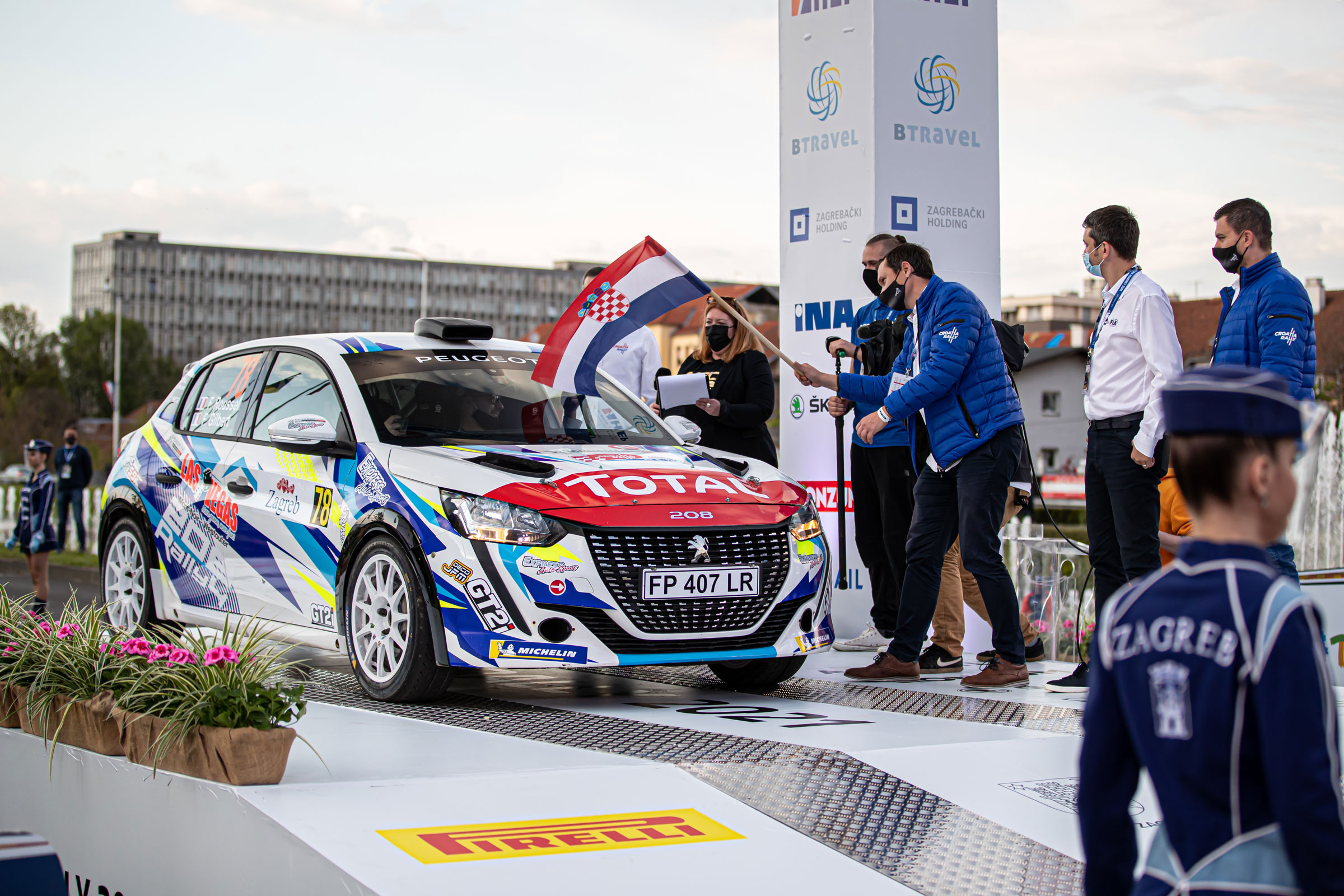
Photo: WRC Croatia Rally
The WRC Croatia Rally 2022, which will bring together the world's best rally drivers, will be held from April 21st to 24th, at attractive speed tests through five Croatian counties: Zagreb, Karlovac, Krapina-Zagorje, Primorje-Gorski Kotar and Varaždin, while the ceremonial start and finish and the driver's park, which this year provides a rich program, will be located in Zagreb, reports tportal.hr.
This year, a record number of spectators is expected. Namely, according to organizers, the competition will be watched by more than 350,000 spectators in special fan zones and along the track, whose arrivals are expected from Europe and many other countries. With many surprises and rich content for which preparations are in full swing, 2022 is a special year as the World Rally Championship celebrates its 50th anniversary, and this special anniversary will be marked by a new, hybrid era of Rally1 vehicles that use sustainable fuel and electricity.
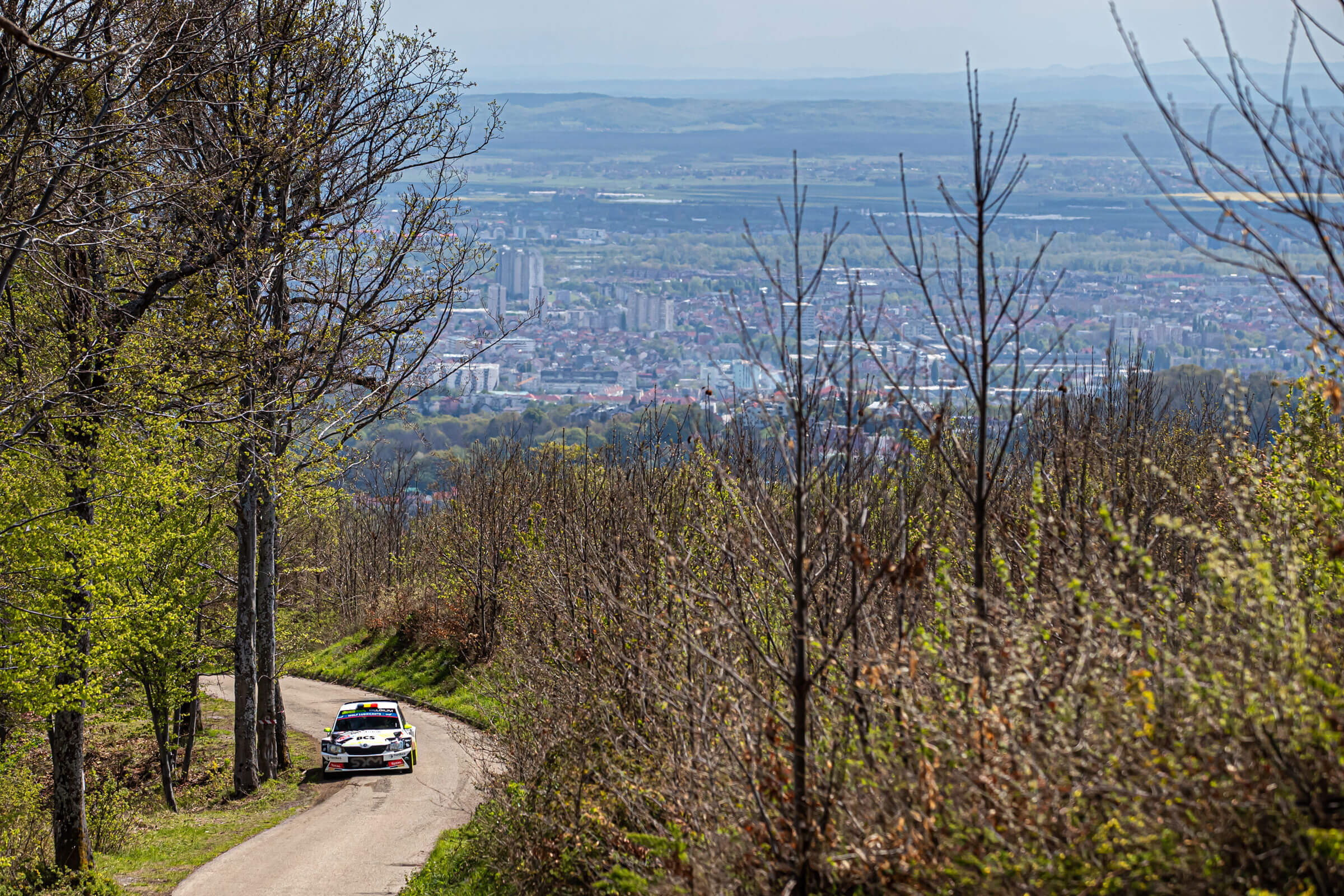
Photo: WRC Croatia Rally
The WRC season started last weekend in Monte Carlo, and Sebastien Loeb and Isabelle Galmiche in the Ford Puma won an unpredictable race until the very end. At the age of 47, Loeb became the oldest winner of a WRC race in history, and he reached his 80th victory in the World Rally Championship in Monte Carlo.
''Croatia has proven to be a sports organizer that is well worth counting on. To include Croatia in the world calendar, to bring the World Championship, and to organize a race at such a high level is a huge success for our country. The race itself is a Croatian product because almost the entire race is organized by a Croatian sports staff, which we are very proud of. This race, in addition to giving the wind in the back to the development of motorsport, significantly contributes to the promotion of Croatia, and I am convinced that, like last year, we will host some of the most important people in the world sports'', said Davorin Štetner, president of the Croatian Automobile & Karting Federation.
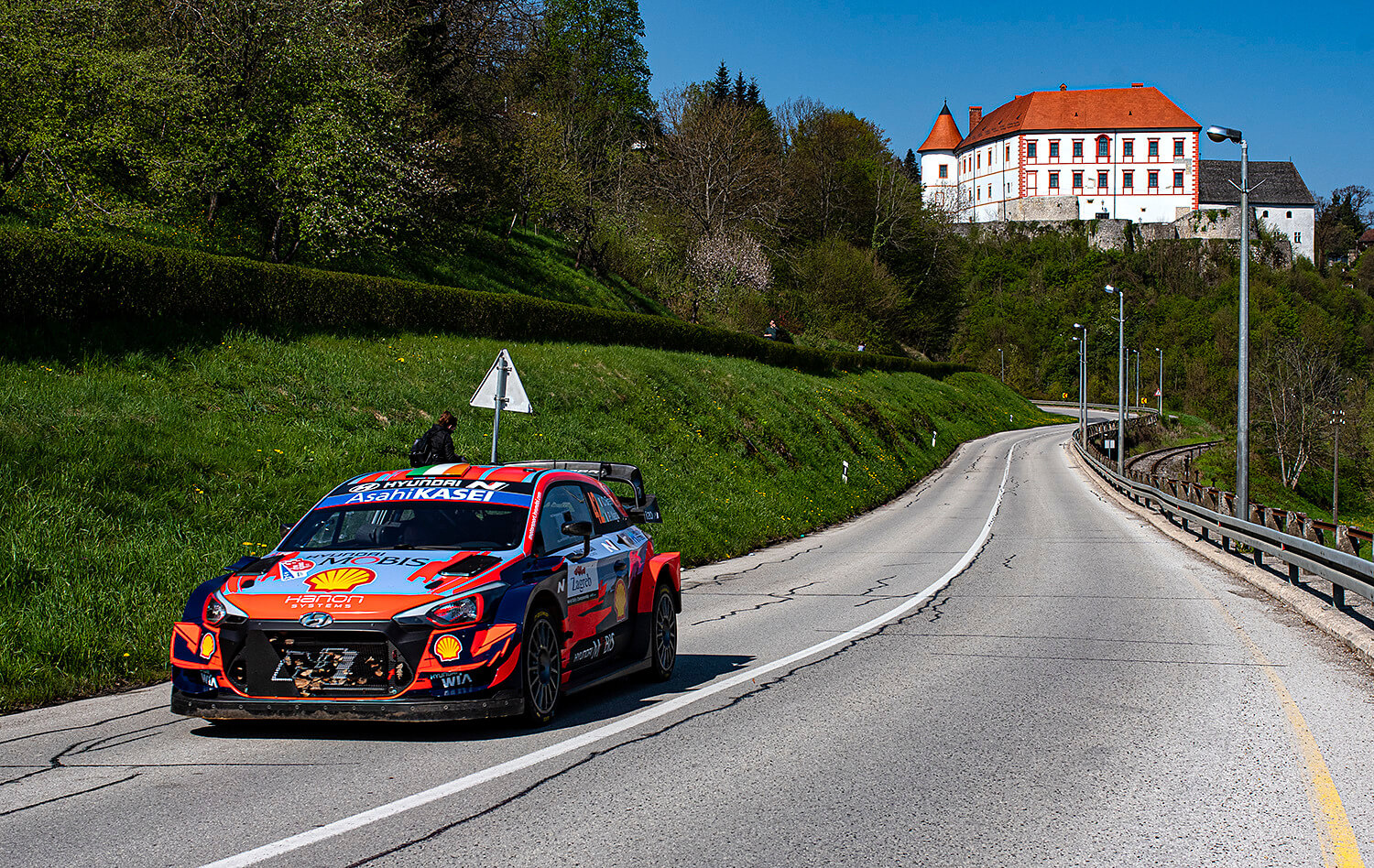
Photo: WRC Croatia Rally
''Early Bird'' tickets will be on sale soon, which in addition to including privileged views of the big event, will also offer special benefits such as food catering and entertainment all day.
We remind you that, in addition to the spectacular races that this new edition of the WRC Croatia Rally will offer, those who are in Zagreb during the days prior to the start of the stage will be able to enjoy special moments, such as the presentation of the vehicles competing in the Ban Jelačić Square, which attracted a large number of people, including fans and onlookers.
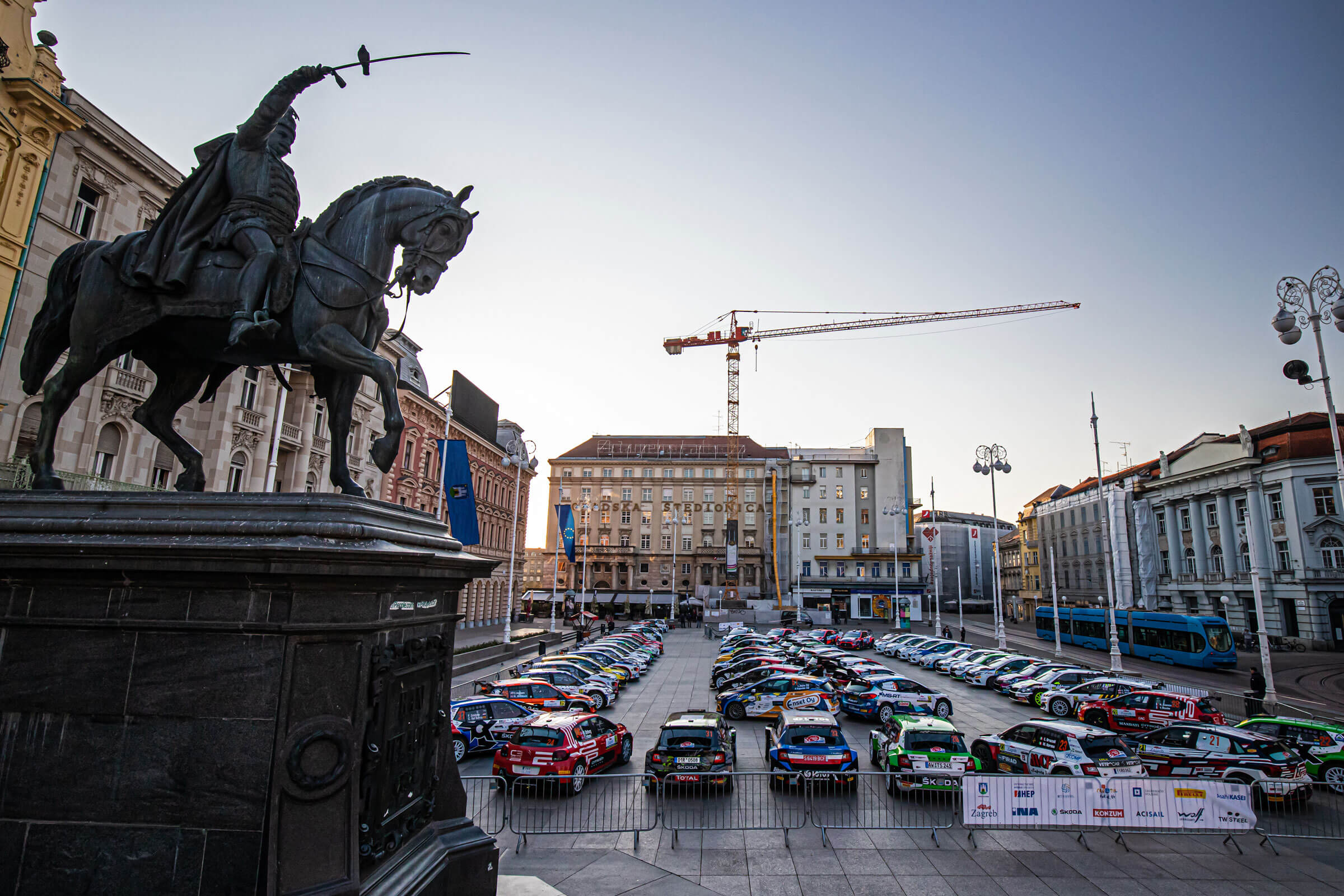
Photo: WRC Croatia Rally
The organizers of the WRC Croatia Rally 2022 are already fine-tuning all the preparations to create a motorsport atmosphere throughout the country, especially in the Croatian capital. The excellent organization in 2021 left very positive numbers both in ratings, spectators, as well as in profits. However, all this is an extra motivation for this edition to overcome all the successes achieved last year, and in this way continue to convince the FIA and ensure its presence in the World Rally Championship calendar beyond 2023.
It should be noted that this year, for the first time, the WRC Croatia Rally 2022 will feature spectators in all instances, something that could not be done in 2021 due to the epidemiological situation. Those who purchase tickets must bear in mind that the epidemiological measures for the safe development of the championship, which will be confirmed in the coming weeks, must be complied with without exception. Last year, the spectators were able to be at the speed tests, but this year they will be able to closely follow all the stages of the race, something that excites both them and the organizers.
The first edition of the WRC Croatia Rally, held last year, left many memorable moments both on and off the track. Let us remind you that Sebastian Ogier was the first winner of the WRC edition in Croatia. Just before the last gear, the Welshman Elfyn Evans (Toyota) had a 3.9-second advantage over Ogier but made a mistake in the last turn of the rally and lost the victory by only six-tenths of a second. Ogier thus reached the 51st triumph in his career.
Similarly, it should be remembered that the 2021 edition of the WRC Croatia Rally had an extra motivation after the earthquake that affected the county of Sisak Moslavina, and especially the town of Petrinja, at the end of December 2020. The earthquake was also felt in Zagreb, which itself was still recovering from the violent earthquake in March of that year. The organization behind the WRC Croatia Rally 2021 launched the humanitarian campaign ''Together to the Finish Line'', along with the Croatian Red Cross. A large number of drivers joined the initiative and this motivated many others in the world of motorsport to contribute with donations.
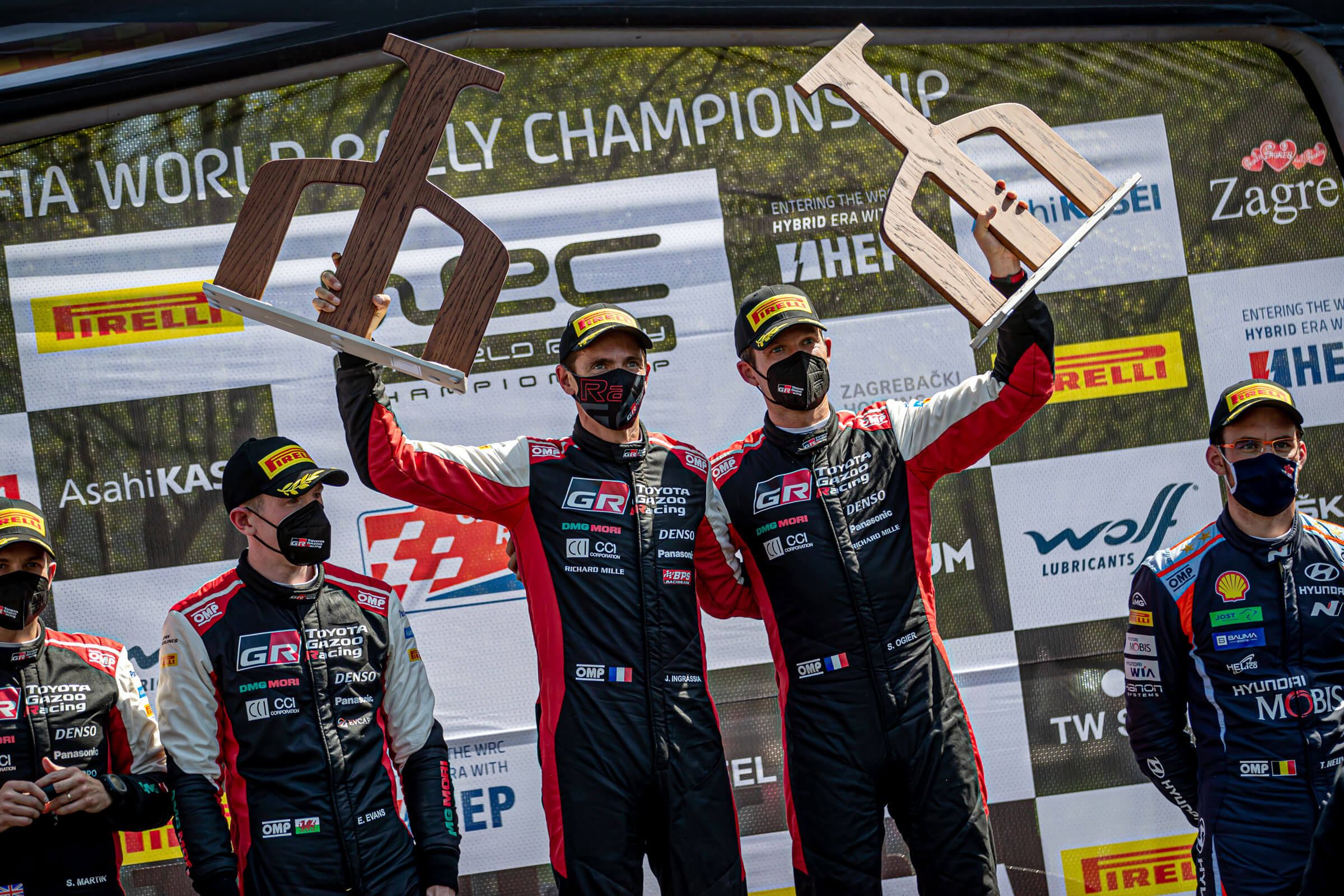
Photo: WRC Croatia Rally
Belgian Thierry Neuville, who came in third in Croatia Rally 2021, donated €4,000 for the reconstruction of the building of the General Hospital "Dr. Ivo Pedišić" in Sisak. Together with his colleagues Sebastien Ogier and Teemu Suninen, Neuville has been supporting the humanitarian campaign since the very start, and the Belgian had announced that he would donate €2,000 for participating and €4,000 if he won a second or third place that year.
For more about the WRC Croatia Rally 2022, such as news, accreditation information, accommodation, virtual store and more, visit the official website of the WRC Croatia Rally.
To read more about sport in Croatia, follow TCN’s dedicated page.
Croatia's Coronavirus Update: 15,416 Cases, 41 Deaths, 10,462 Recoveries
ZAGREB, 29 Jan 2022 - In the last 24 hours, PCR tests have detected 9,904 new cases of the infection with coronavirus plus 5,512 cases detected by rapid antigene tests, Croatia's COVID-19 crisis management team reported on Saturday.
The COVID-related death toll has increased by 41 to 13,731.
There are currently 66,152 active cases of infection with SARS-CoV-2 in the country. Of them, 1,936 are hospitalized patients, including 183 placed on ventilators.
Since the first registered case of the infection with the novel virus in late February 2020, so far, 929,502 cases of the infection have been detected, and of them, 849,619 people have recovered, including 10,462 recoveries in the last 24 hours.
To date, 64.79% of adult Croatians have fully been vaccinated against this infectious disease.
For all you need to know about coronavirus specific to Croatia, make sure to bookmark our dedicated section and select your preferred language if it isn't English.
MEP: Milanović's Statement for Internal Face-off, But Damage is in Foreign Affairs
ZAGREB, 29 Jan 2022 - Although President Zoran Milanović's statements on Ukraine, EU, NATO, and Russia were intended for his face-off with Prime Minister Andrej Plenković in the home policy, they have done damage to Croatia's credibility in the global affairs, Member of European Parliament, Tonino Picula, says.
The Croatian MEP said in an interview with Hina before his departure for Ukraine at the helm of the European Parliament's delegation, that he could see Milanovć's claims about Ukraine not belonging in NATO and his understanding for Russia's arguments in the Russia-Ukraine crisis "as his statements serving primarily the purpose of his conflicts on the internal policy scene."
The president and the premier are so deep in the conflict that some of the topics that are supposed to reflect a minimum of state unity such as foreign affairs topics have also fallen victim to that conflict, the Croatian MEP told Hina.
Last Tuesday, Milanović said that Croatia would not have a military presence in Ukraine in the event of a Russian invasion, that the events in Ukraine of 2014, known as the Revolution of Dignity, were a military coup, that Europe had not done enough to assist Kyiv, and that the tensions on the Ukraine-Russia border were a consequence of the US home policy. "All that is happening in the antechamber of Russia. One must reach a deal that will take account of the security interests of Russia," said Milanović then.
Picula said that at the moment no one is considering the deployment of NATO's troops in Ukraine.
"I am against the policy that undermines the credibility of Croatia as a member of the European Union and of NATO. Milanović's pro-Russian attitudes undermine that credibility and I also hold that PM Plenković, too, undermines Croatia's credibility primarily through toleration of corruption in his own ranks."
Picula calls on the head of state and the head of government to refrain from spilling their conflicts over to foreign affairs.
"This story should be closed as soon as possible. Croatia needs definitely a higher degree of consent between top leaders for the sake of its credibility abroad," said Picula who was the foreign minister in the coalition government led by Prime Minister Ivica Račan of the SDP party in the early 2000s.
Ukraine crisis exposes weaknesses of EU
While Kyiv and Western countries are bracing themselves for a potential invasion of Russia along its border with Ukraine, where Russian troops are being amassed, Moscow refutes claims that it is preparing attacks on its southwestern neighbour, and insists that the West provides it with guarantees that NATO will not be expanded further eastwards.
On Sunday, the eight-member EP delegation, which includes Picula, is set to fly to Ukraine to meet the Ukrainian leadership.
In the European Parliament, there are different views on the Ukrainian crisis.
Picula said that a majority of the MEPs express solidarity with Ukraine, and support the respect for that country's sovereignty and right to choose which associations it would like to join.
Different approaches of the EU member states to the response to the Russia-Ukraine crisis have an effect on the EU's political strength, he said.
"This crisis also exposes the EU being stuck halfway in its integrations, and this half of unfinished integrations prevents the Union from responding to ad hoc crises, notably when they are external shocks."
The Ukrainian crisis also juxtaposes much wider geopolitical interests, he said adding that Russian President Vladimir Putin would like to avoid EU leaders in efforts to settle the current crisis.
"He wants to talk with the Americans and not with EU leaders, and this is part of his strategy to disintegrate the West."
On the other hand, he does not refrain from holding talks with the economic establishment of the EU and reminding them of the benefits of the Russian-European cooperation, Picula said.
Granting Russia's maximum demands such as that Ukraine should not join the EU or NATO and that NATO should pull out of eastern countries would mean that the European project is abandoned, said the Croatian MEP.
He says he cannot accept the arguments of Moscow that it could feel threatened in the event of the further eastbound expansion of NATO.
"Although Russia's fears about an invasion from Europe have their roots in the past, also the east of Europe has the historically rooted fears of Russian invasion," Picula told Hina in the interview published on Saturday.
For more, check out our politics section.
52,000 Croats Earn Minimum Wage
ZAGREB, 29 Jan 2022 - An estimated 52,000 employed Croatians receive the minimum wage, and roughly 20,000 of them are workers in the wood-processing, leather, and textile industry.
In terms of the minimum wage for January 2022, Croatia ranked 21st, with €624, on the list of the 27 EU member-states. The other four countries at the bottom of the ranking were Hungary (€542), Romania (€515), Latvia (€500) and Bulgaria (€332), Večernji List (VL) reported on Saturday.
In 2022, the minimum wage was raised from HRK 3,400 to the net monthly amount of HRK 3,750 and the gross amount of 4,700, the daily newspaper recalled. In late October 2021, the parliament amended the Minimum Wage Act by majority vote whereby the gross minimum wage was raised to HRK 4,687 from HRK 4,250. As of this year, employers will have to contract the minimum wage with employees in the gross amount.
The daily newspaper says that in December 2021, one in ten employees got the take-home pay in the amount of HRK 3,915, or his or her gross wage was below HRK 4,772. Slightly over 1.57 million people in Croatia were in employment in December 2021, according to the data provided by the national statistical office, which means that 3.3% of them were on the minimum wage (HRK 3,750)
In December, the average take-home wage was HRK 7,333 (€978), and in 2022, this monthly average is expected to finally exceed 1,000 euros.
In 2022, the minimum wage will for the first time exceed 50% of the average wage, while five years ago it was equivalent to a mere 38% of the average monthly salary.
(€1= HRK 7.5)
For more, check out our dedicated business section.
Nearly 4,000 Postgraduates Enrolled in 2020-2021 School Year in Croatia
ZAGREB, 29 Jan 2022 - During the 2020-2021 school year there were 3,987 postgraduate students enrolled in Croatia, and three-fifths of the enrollments were at the University of Zagreb (61.5%).
The smallest share of postgraduate students was at the University of Dubrovnik (0.4%), according to the data released by the national statistical office (DZS).
Of those 3,987 postgraduates, 13.5% were at the University of Rijeka, 9.1% at the University of Osijek, 7.9% at the University of Split, 3.7% at the University of Zadar, 2.1% at the Croatian Catholic University, and 1.3% at University North.
Women prevail among postgraduates
Broken down by gender, women prevailed, 56%, among postgraduate students, and broken down by age, the largest age cohort was between 25-29 with a 39.4% portion.
Broken down by branches of sciences, there were 21% of the enrollments in technical and social sciences each, whereas natural sciences accounted for 18.3%, and 5.7% were studying to earn a doctoral degree in interdisciplinary science programmes.
Lion's share of postgraduates Croatian nationals
As many as 95% of postgraduates had the registered place of residence in Croatia, also 96% were Croatian nationals, and 96.8% of those post-graduates already obtained a master's degree in Croatia,
Most enrollments were employees in the educational sector, 41%, and 3.3% of the postgraduates enrolled in the 2020-2021 academic year were jobless.
Roughly 46% of the students paid themselves postgraduate education fees, in 38.1% of the cases, the costs were covered by employers, and 13.2% of postgraduate studying was financed by the state budget.
For more, check out our dedicated lifestyle section.
Palace of Life, City of Changes Visual Identity Presented: Old Split. New Story.
January 29, 2022 - "The project's visual identity is inspired by lines that represent somewhat chaotic directions of movement, roads, and shortcuts inside Diocletian's Palace, while the slogan highlights a whole new story within the old town." A look at the Palace of Life, City of Changes visual identity.
Palace of Life, City of Changes, is a project in which the Old Town Hall on Split's Pjaca (Narodni trg) was renovated, followed by the renovation of the courtyard and ground floor of the Split City Museum (MGS), which will become accessible to people with disabilities by installing an elevator. Through this project, the southeastern tower of Diocletian's Palace with the Lukačićeva 5 building will be reconstructed and presented to the public, reports the City of Split.
"The project co-financed the renovation and equipping of five buildings, which will provide a unique insight into the invaluable cultural heritage of the historic center of Split and the introduction of new content and presentations of space that have been neglected for years. In addition, the old town hall has been renovated following the latest needs of modern exhibition space. Project documentation is being prepared by Office Vojnović d.o.o. based on which work will soon begin on the above facilities," said Radojka Tomašević, Head of the Service for International and EU Projects, who heads the project implementation team by the City of Split in cooperation with partners - Split Tourist Board and Split City Museum.
Split studio Kazinoti & Komenda designed and created the project's visual identity. Karlo Kazinoti and Mišo Komenda have already been recognized for their quality and memorable design solutions to numerous cultural projects, but this is undoubtedly the most significant Split project they have worked on. The set task resulted in a dynamic identity of pronounced color in which they summed up the directions of movement through the countless streets of Split's historic core:
“The design was created as a reduction of the palace to four squares, i.e., towers, while the walls were completely erased to suggest openness and metaphorically depict life spreading outside the palace. The lines as a formative element are inspired by the somewhat chaotic directions of movement, roads, shortcuts inside the palace created by life within the walls. In the end, we see a similar network of intertwined directions when looking at the sky because of the clothesline (tiramola)," explained Kazinoti & Komenda.
The extended function of this design allows the grid of lines to be applied as a graphic pattern or framed within a given format as needed. The font Spalat by prof. Nikola Đurek and the project's name were accompanied by the slogan "Old Split. New Story."
“The goal was to communicate the novelties in the palace, i..e., the old part of the city, but the specificity is that these 'novelties' are centuries-old heritage, so we drew a parallel between the old and the new. We are erasing the border between them because part of the unknown heritage, which, together with many visitors, will be revived only now and become - new," explained Karlo Kazinoti.
Thanks to investments through the Palace of Life project, the citizens of Split will get a new perspective, the opportunity to enjoy the view of the city from the eastern wall of Diocletian's Palace and from the terrace of the Southeast Tower, which will house the interpretation center and exhibition space. Since its opening, the old town hall has attracted visitors of all generations with an excellent exhibition "Judita 500". At the same time, the Split City Museum on the ground floor and renovated courtyard of the Papalić Palace will receive a new, modernized exhibition that will provide visitors with a completely new experience of old stories.
Palace of Life, City of Changes, is one of the most significant investment projects in the restoration and revitalization of the cultural heritage of Split in more than 60 years, more precisely since the opening of Diocletian's cellars. The project also includes the development of the Old Town Management Plan and the Visitor Management Action Plan. The total estimated value of the project is HRK 25.4 million, of which HRK 18.2 million is a grant from the European Union from the European Regional Development Fund.
For more, check out our dedicated lifestyle section.


